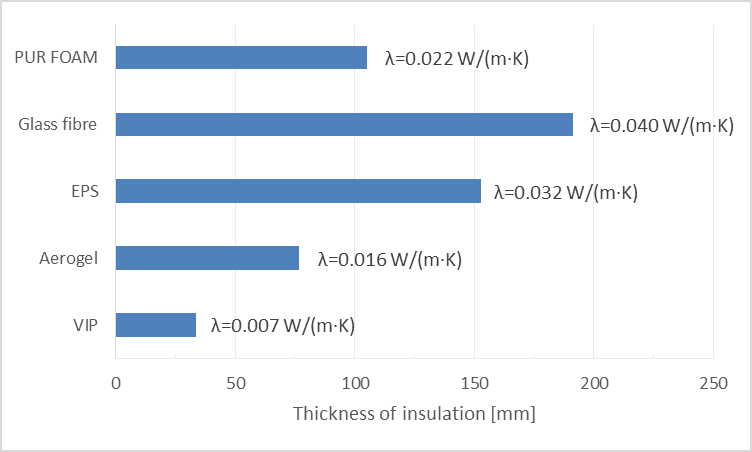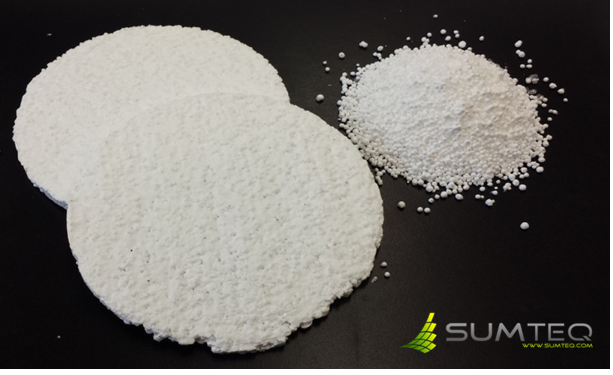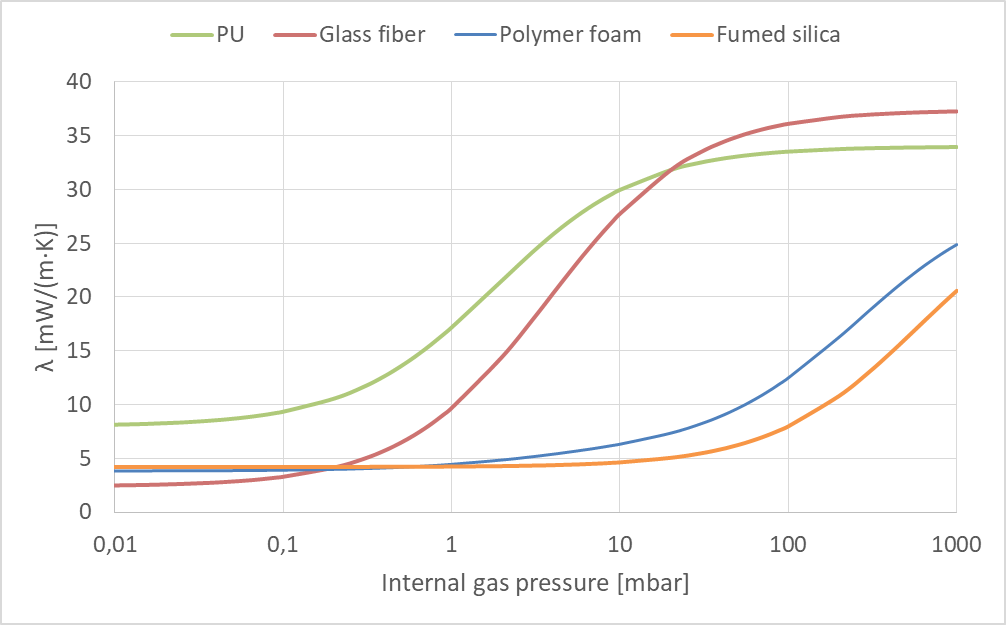The European ageing and energy inefficient residential building stock needs to be refurbished to achieve the energy efficiency targets and to secure healthy and comfortable living conditions. ReCO2ST project addresses the challenges of nZEB refurbishment through a systemic 3 step approach: firstly deploying a Refurbishment Assessment Tool to create refurbishment scenarios, empowering the decision making of the building owner, public or private; secondly forming Action Plans for the renovation through Integrated Project Delivery (IPD) and finally installing a refurbishment package of innovative and customizable technologies (Retrofit-Kit) for personalized renovation. One of the technologies of the Retrofit-Kit are vacuum insulation panels (VIPs). VIPs offer the best possible insulation performance on the market. They achieve a thermal conductivity of 0.007 W/(m∙K), which reduces significantly the required insulation thickness for a targeted U-value.
For example, to reduce the U-value of a wall from 0.53 W/(m²∙K) to 0.15 W/(m²∙K) only about 34mm thick VIP will be required against a 105 mm thick polyurethane foam layer; see Figure 1. This makes VIP the perfect insulation solution where limited space is available or if the available space is very valuable like in big cities.

Figure 1: Required insulation thicknesses to improve the U-value from 0.53 W/(m²∙K) to 0.15 W/(m²∙K).
VIPs consist of a micro- and open- porous core material, which is wrapped into a dust protective fleece, evacuated and sealed into a high-barrier film (Figure 2). The high barrier film reduces the intake of air and water vapour, resulting in a service life of up to 50 years. Depending on the application, different core materials can be used, e.g. polyurethane, glass fiber or fumed silica. For long term applications, such as the construction sector, currently only fumed silica is suitable.

Figure 2: Composition of a vacuum insulation panel.
A new open porous polystyrene foam (Figure 3), introduced by the SUMTEQ, with tremendous potential for use in VIP has been investigated within the scope of ReCO2ST.

Figure 3: Foamed polymer granules and shaped parts.
Material was tested at Va-Q-Tec and Brunel University London to characterize and understand its suitability for VIPs. Besides evacuability, one relevant characteristic for the suitability as VIP core material is the dependency of thermal conductivity (λ) on gas pressure (p). Figure 4 shows this for different kinds of VIP core materials.
Glass fiber, used in a large proportion of VIPs currently produced, achieves the lowest thermal conductivity of all materials, of about 3 mW/(m∙K), at a gas pressures of 10-2 mbar. However, this material is very sensitive to an increase of gas pressure. This is notable by a strong increase by small increment in pressures, with an added contribution of “coupling effect”, which results in the end in a very high thermal conductivity of about 37 mW/(m∙K) at atmospheric pressure. Therefore, glass fiber is only suitable for VIPs which are required to perform over a very short useful life with vacuum retention capacity strongly depending on the properties of the high barrier film.
Open porous Polyurethane shows the highest value of thermal conductivity of 8 mW/(m∙K) at 10-2 mbar. However, it shows a huge increase in thermal conductivity by small changes of gas pressure. This material does not suffer from “coupling effect”, resulting in a thermal conductivity of about 34 mW/(m∙K) at atmospheric pressure. Like glass fibers, polyurethane cores are mostly used in short term, VIP solutions, such as ‘one-way’ transport containers.
Fumed silica on the other hand starts at about 4 mW/(m∙K) and maintains this thermal conductivity for a very long range of gas pressure. This is possible due to the nanometric pore structure of fumed silica, which is able to suppress air thermal conductivity in a larger range of gas pressure. This means that this material is the least sensitive of all materials discussed above, and therefore suitable for long term applications, such as building industry. At atmospheric pressure, the total thermal conductivity of fumed silica VIPs is 20 mW/(m∙K), even below that of still air (~26 mW/(m∙K) at 20°C.
The new developments of the polymer foam have been investigated for the dependence of thermal conductivity on pressure like the conventional VIP core materials. The new SUMTEQ foam was found, like fumed silica, to start with a thermal conductivity of about 4 mW/(m∙K) at low pressures. Its thermal conductivity increased stronger than that for fumed silica, but not as steeply as for the other two core materials. This behavior makes this new polymer foam suitable for the use in vacuum insulation panels. At atmospheric conditions, the foam reached a thermal conductivity of about 25 mW/(m∙K), which is still better than standard unevacuated EPS foam insulation.

Figure 4: λ (p) for the newly developed polymer foam VIP in comparison to conventional VIP core materials.